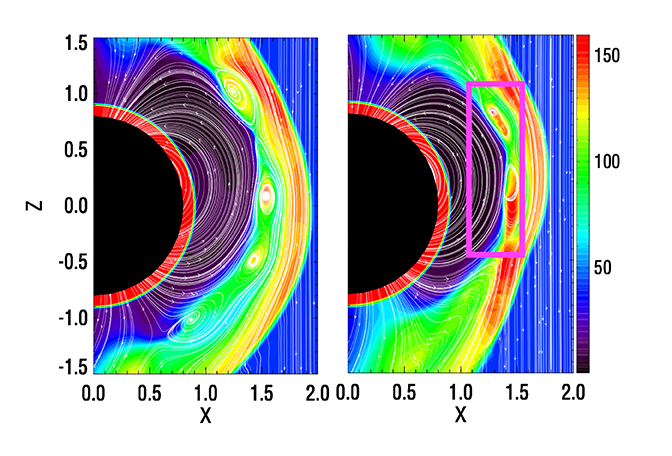
Mercury Magnetosphere Research Proposal Earns Student a NASA Fellowship
Changkun Li has been selected for the competitive Future Investigators in NASA Earth and Space Science and Technology fellowship.

Changkun Li has been selected for the competitive Future Investigators in NASA Earth and Space Science and Technology fellowship.
Changkun Li, a graduate student at U-M Climate and Space, has been selected to receive the highly competitive Future Investigators in NASA Earth and Space Science and Technology fellowship.
As part of the FINESST fellowship, NASA has awarded $100,000 to fund Li’s research proposal, “Modeling Mercury’s Dayside Magnetopause Reconnection and Its Impact on the Global Magnetospheric Dynamics.”
Out of the 927 proposals received, NASA’s Planetary Science Division reviewed 224 proposals, and the Science Mission Directorate selected only 32 proposals for awards. Li’s faculty advisor is Associate Professor Xianzhe Jia, Ph.D.
“Observations from the MESSENGER spacecraft that was in orbit around Mercury for about four years reveal that the planet has a miniature magnetosphere arising from the interaction of its intrinsic field with the inner heliosphere solar wind. Despite its small size, Mercury’s magnetosphere appears to be more dynamic than Earth’s in that the typical timescales for global plasma and magnetic flux circulation are much shorter than observed at Earth, and the dayside magnetopause reconnection occurs at much faster rates and under a much wider range of magnetic shear angles. As a product of multiple X-line reconnection, flux transfer events (FTEs) are observed to form much more frequently with occurrence rates of ~ 50 times higher than detected at Earth. Aside from the apparent difference in system size, MESSENGER observations suggest that the large differences in reconnection-driven dynamics between Mercury’s and Earth’s magnetospheres are likely related to the upstream solar wind conditions. Specifically, at Mercury’s orbit the solar wind Alfvén Mach number and the resulting magnetosheath plasma beta are smaller than at Earth due to its proximity to the Sun, which makes Mercury’s magnetopause very conducive to reconnection.
“However, because of the intrinsic limitations of in-situ observations obtained through single spacecraft, there lacks a quantitative, global understanding of how magnetopause reconnection occurs at Mercury and its large-scale consequences. Many outstanding questions remain concerning the nature of the dayside magnetopause reconnection, its dependence on the upstream parameters, and the role played by FTEs in driving the global dynamics. Here we propose to use two state-of-the-art global models, BATSRUS Hall-MHD and MHD-EPIC, to simulate Mercury’s magnetopause dynamics under a wide variety of solar wind and IMF conditions.
“By driving the two models with the same set of upstream conditions designed to represent a wide range of scenarios encountered at Mercury, we aim to address the following science questions:
1. How does the magnetopause reconnection rate depend on the upstream solar wind conditions?
2. How do the FTE characteristics depend on dayside reconnection and upstream conditions?
3. What is the contribution of FTEs to global plasma and magnetic flux circulation?
“The proposed investigation is expected to greatly enhance the science return of the MESSENGER mission and to provide important scientific insight and context for the interpretation of observations from future missions to Mercury, such as the much-anticipated BepiColombo mission scheduled to arrive at Mercury in late 2025.”